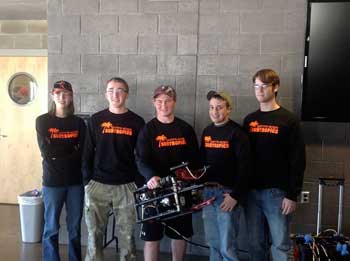First Annual Deep-C ROV Competition Showcases Students’ Talent and Ingenuity
March 4, 2013 -- Last summer, the Dauphin Island Sea Lab (DISL) hosted teachers from around the state of Florida to partipate in a marine science and underwater technology workshop. Participants spent four days learning about Remotely Operated Vehicle (ROV) construction, as well as activities that they could implement in the classroom to enhance students understanding of buoyancy, basic engineering principles, basic circuitry and deep sea oceanography. (Read about the Summer 2012 training workshop). They left the workshop and returned to their schools with building supplies and a mission — assemble a team of enthusiastic students who could take on the challenge of building their own ROV for a student competition in the Spring.
Months of hard work culminated with the first annual Deep-C ROV competition where six teams braved the cold weather to test their creations.
|
|
The pool at DISL was transformed into "Mission Control" as each team had the opportunity to complete a series of tasks ranging from successfully navigating through a hoop to identifying several marine species. After the first round the students had a chance to make adjustments and modifications to their ROV before jumping back into the pool for the second round.
Carrie Riley, DISL educator and one of the event's coordinators, commented, "I am thrilled with the success of the first annual ROV competition! The excitement from both the students and the teachers was contagious. This year's teams are already plotting for their return to DISL to compete again in 2014! We can't wait to start planning for the SECOND annual competition next spring and we're looking forward to the addition of Alabama ROV teams!"
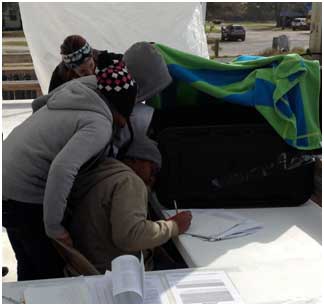 Lake Weir High School team members directing their ROV during the first mission (Photo credit: Amelia Vaughan, Deep-C) |
We had the opportunity to speak with many of the students during the competition and were very impressed with how articulate and knowledgeable they were about ROV construction. It was clear that much had been learned during the building process and their enthusiasm was contagious! In addition to the technical skills that were developed over the course of this competition, students also learned a little bit about themselves through the process.
Student Quoc Nyugen from West Florida High School in Pensacola said he, “first become involved in the project for academic reasons, but as I got into it and I met my team and my instructors and made connections, I started to really like robotics and it’s now become more than just academics, it’s a career field that I would like to go into in the future.”
The weekend consisted of more than just competition, however, as the participating students were also able to visit the DISL Estuarium, deploy a professional ROV in the Gulf of Mexico, and learn about how ROVs are used in the field with a presentation by Dr. Will Patterson, Senior Marine Scientist and Associate Professor of Marine Science at the University of South Alabama. Dr. Patterson studies population dynamics, trophic dynamics, and population structure of marine fishes and uses ROVs in his research.
|
|
After two missions, each team made a presentation describing their design process and what they learned as a result. Then they participated in a round of questioning by the competition judges. The winners were recognized during an awards ceremony Sunday afternoon. The team from Santa Rosa Christian School — the Subtropicals — were victorious, making them the first winners in what will hopefully be a long tradition of Deep-C sponsored ROV competitions at the Sea Lab.
"We are very pleased with the outcomes of our first year of Deep-C activities. We had some fantastic and dedicated teachers to work with and met some amazing high school students" Dr. Tina Miller-Way, chair of Discovery Hall Programs for Education and Outreach at the Dauphin Island Sea Lab. "Students indicated that they really enjoyed the process of building their ROV from scratch and testing it, as well as themselves, by putting it in the water and pitting it against other designs.
According to Miller-Way, post-event surveys demonstrated increased understanding of circuitry; concepts of hydrodynamics and buoyancy; the use of ROVs in marine research, industry and exploration; possible careers in these fields and an appreciation of effective teamwork. And if that wasn’t enough, students, teachers and the DISL staff had a great time hosting the competition!
Final Results
- 1st: Santa Rosa Christian School, Milton
- 2nd: Pine Forest High School, Pensacola
- 3rd: Lake Weir High School, Ocala
- 4th: Apopka High School, Apopka
- 5th: West Florida High School, Pensacola
- 6th: Rickards High School, Tallahassee
Special Awards:
- Buoyancy Award – For exceptional positive attitude in the face of hardship: West Florida High School, Pensacola
- Tethered Together Award – For most outstanding teamwork: Pine Forest High School, Pensacola
DISL's Discovery Hall Programs will hold another Deep-C ROV teacher workshop this summer, July 7-11, 2013. For more information about DISL"s ROV program, visit http://www.disl.org/rov.
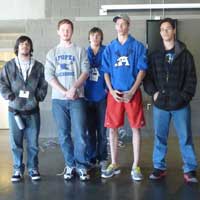
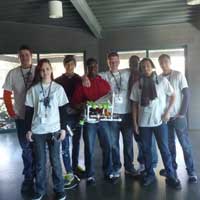
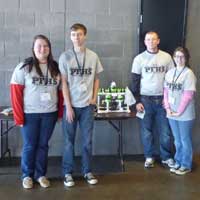
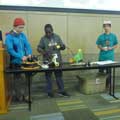
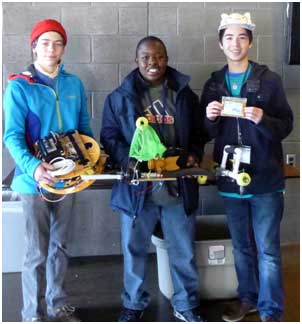
Rickards High School and their “X-Wing”
(Photo credit: Amelia Vaughan, Deep-C)
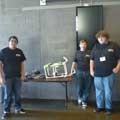
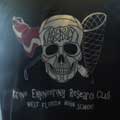
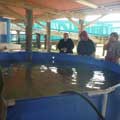
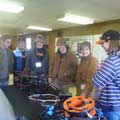
The Deep-C (Deep Sea to Coast Connectivity in the Eastern Gulf of Mexico) Consortium is a long-term, interdisciplinary study of deep sea to coast connectivity in the northeastern Gulf of Mexico. The study is investigating the environmental consequences of petroleum hydrocarbon release in the deep Gulf on living marine resources and ecosystem health. Deep-C research is made possible by a grant from BP/The Gulf of Mexico Research Initiative.
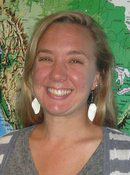 Amelia Vaughan |
Amelia Vaughan is an education and outreach coordinator for the Deep-C consortium and a graduate student in Library and Information Sciences. Her love for the ocean started at the tide pools in her home state of Oregon and has led her to teach ocean science all over the country from the Channel Islands to the Long Island Sound. She is passionate about education and connecting students with Deep-C research!
 Tina Miller-Way |
Dr. Tina Miller-Way is Chair of Discovery Hall Programs for Education and Outreach at the Dauphin Island Sea Lab (DISL). The lab, located in southern Mobile County off Alabama's Gulf Coast, is well-known for their excellence in education and outreach programming. As a marine laboratory, DISL's mission encompasses marine science education, marine science research, coastal zone management policy and educating the general public through the Estuarium, Dauphin Island Sea Lab's public aquarium. The lab partners with more than 20 colleges and with primary schools to offer marine science coursework up to the graduate level. The research programs of the Dauphin Island Sea Lab range from biogeochemistry and oceanography to systems ecology. Most research focuses on the near-shore and estuarine processes of Mobile Bay, field sites of our internationally-renowned faculty include Mexico, Australia, and Croatia and other countries.
Deep-C was a four-year, interdisciplinary study of deep sea to coast connectivity in the northeastern Gulf of Mexico.Deep-C is no longer an active research project. The information on this website is for historical reference purposes only.
Home | About Us | Research Areas | Data Center | News & Multimedia | Education & Outreach
© Deep-C Consortium. All Rights Reserved.
This research was made possible by a grant fromThe Gulf of Mexico Research Initiative (GoMRI).
Copyright | Disclaimer | Privacy Policy
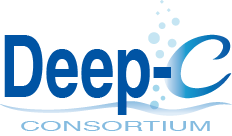
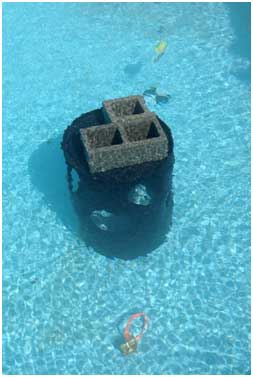 "Mission Control" a.k.a. the DISL Pool (Photo credit: Amelia Vaughan, Deep-C)
"Mission Control" a.k.a. the DISL Pool (Photo credit: Amelia Vaughan, Deep-C)